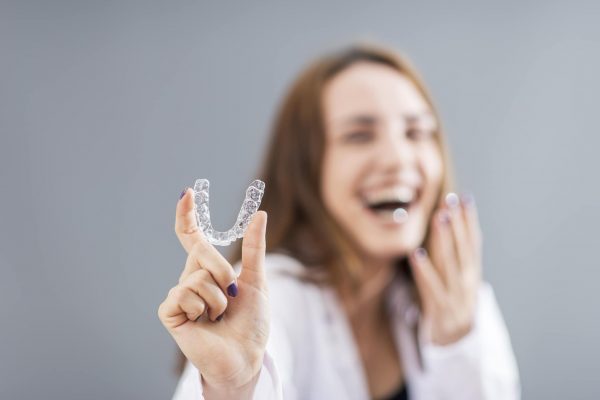Invisalign aligners have given patients more freedom than ever before. These sleek, customized, clear trays apply gentle pressure, which helps put teeth into their proper placement. However, Invisalign can’t address all orthodontic issues.
For over 52 years, Risinger Orthodontics has treated each patient with care, addressing their individual orthodontic needs with lasting results. Because Dr. Rick is an Invisalign Top 1% Diamond Plus professional, he understands how to get the most out of your treatment.
Learn more about what Invisalign can fix during your complimentary consultation.
Invisalign is one of the most advanced technologies in orthodontic appliances. Here are some of the most common concerns that Invisalign addresses:

Open bites — or a misaligned bite — can make eating difficult. People with open bites have a noticeable gap that keeps the teeth on the top lifted above the bottom set of teeth, even with the mouth closed. In most cases of open bites, Invisalign adjustments address any spatial issues and resolve bite problems.
Too much space between teeth allows room for food to build up. Invisalign aligners apply moderate pressure to the teeth that readjust their placement and reduce gaps.
Crowding occurs when the teeth are too compressed to fit comfortably in the jaw. Crowded teeth often turn sideways in the gums. Invisalign helps straighten crowded teeth and gradually realigns them for a more natural smile.
Overbites occur when the top teeth extend too far in front of the bottom teeth. Biting, eating, and even talking can create difficulty for people with overbites. Only expert orthodontists like Dr. Rick know how to get lasting results for overbites with Invisalign.
Underbites occur when the bottom teeth extend too far in front of the top teeth. This condition causes difficulty while eating, biting, and talking. Underbites occur when the bottom teeth extend too far in front of the top teeth. Again, underbites require the supervision of an Invisalign expert.
In crossbite conditions, a patient’s top teeth are positioned inside the alignment of the bottom teeth. Invisalign shifts crossbites into a better position within the gums.
A combination of Invisalign and braces — or other dental and orthodontic treatment methods — may be required for more advanced orthodontic needs.
Some conditions that may not benefit from intervention with Invisalign include:

Extremely pointed teeth or short and overly round teeth produce difficulties for aligners. Jagged teeth are less conducive to gripping and are typically more resistant to Invisalign’s gentle forces.
Invisalign adjusts overcrowded teeth with slightly rotated positions. However, the degree of rotation can determine Invisalign’s effectiveness. In some cases, the degree of rotation or the tilt of a tooth (forward or backward) may call for more involved steps.
Currently, the advanced technology only moves gaps up to 6mm in space. More significant gaps may demand other forms of tooth correction.
Leveling the height of teeth — especially in the back area of the mouth — may require braces. That said, Invisalign can be effective in milder cases, especially when extrusion and intrusion occur in the front area of the mouth.
The midline is an imaginary line that runs down the middle of your face. This spot is where your teeth should align. When tooth alignment strays significantly from the midline, it may signify that Invisalign won’t provide optimal results. However, in mild cases of midline movement, Invisalign may still be an option.
Patients who have undergone previous dental work should seek orthodontic advice before starting Invisalign treatment. Dental implants like crowns, veneers, and bridges change the shape of your teeth. Be sure to discuss any previous or upcoming dental work with Dr. Rick before beginning your treatment.
Invisalign has earned a superior reputation for helping people achieve the smile of their dreams. However, every person has unique needs. The best way to know if Invisalign is right for you is to schedule a complimentary consultation. As an Invisalign Diamond Plus Provider, Dr. Rick has unparalleled insight into getting results with aligners.
People across Glastonbury have relied on Risinger Orthodontics to get the smile they’ve always wanted. Call our office at 860-633-8321 or schedule your consultation — available in-person or virtual.